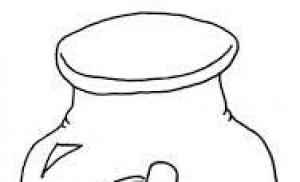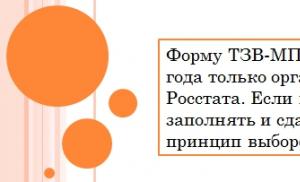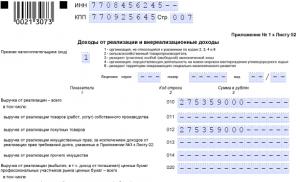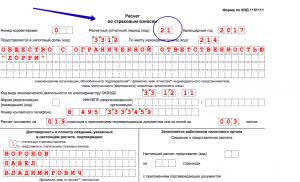Earthworm breath. Earthworms or earthworms
Earthworm
annelids have the following aromorphoses: 1. The body was divided into segments (metamers) with repeating sets internal organs. 2. A secondary cavity appeared - the whole, which has its own mesodermal lining. 3. There has been further complication nervous system: concentration of nerve cells on the ventral side in each segment (abdominal nerve chain formed), a significant increase in the brain ganglia (nodes) (supraoesophageal, suboesophageal nerve ganglia, peripharyngeal ring). 4. A closed circulatory system, which ensured the rapid transport of substances throughout the body. 5. Appeared respiratory system, which increased the respiratory surface and the intensity of gas exchange. 6. The digestive system became more complicated: the midgut was differentiated into sections, which led to a gradual process of digestion. 7. Parapodia formed - limbs for movement. 8. There was a further complication of the excretory organs: a metanephridial multicellular excretory system was formed.
Earthworm – Lumbricus terrestris(type Annelids, class Small-bristle worms, Lumbricidae family) lives in moist, humus-rich soil. He feeds organic matter passing through the intestines the earth with plant residues. Ch. Darwin also noted useful influence earthworms on soil fertility. Dragging the remains of plants into the mink, they enrich it with humus. Laying passages in the soil, they contribute to the penetration of air and water to the roots of plants.
Earthworms are active in the warm season. In winter they hibernate. Freezing kills worms instantly, so they must burrow deeper into the ground where low temperatures do not penetrate. In the spring, when the temperature reaches a suitable value and the ground is saturated with rainwater, they have a mating season. They reproduce very quickly, producing about a hundred young worms a year. In summer, the worms are not so active. Food - dying plant residues - is very scarce at this time, and the soil is devoid of moisture, which can cause the death of worms. autumn period again characterized by worm activity. At this time, the reproduction of offspring begins again, which lasts until the onset of winter.
Earthworms live relatively long lives. Some manage to live for about ten years if they do not become victims of birds and moles. Another threat to their lives is the pesticides so widely used in horticulture today.
So, the Earthworm has an elongated, cylindrical body from 10 to 30 cm long. dorsal side more rounded, it is darker, a dorsal blood vessel shines through its skin. Abdominal side somewhat flattened and lighter colored. The anterior end of the body is thicker and darker colored. The body is made up of rings segments. In an adult worm, their number reaches 200. In the area of \u200b\u200b32-37 body segments there is belt rich in mucous glands. External segmentation corresponds to the division of the body cavity by partitions into separate chambers and the segment-by-segment (i.e., in each segment) arrangement of a number of internal organs. On each segment 8 bristles(they are easy to detect if you run your finger along the body of the worm in the direction from the rear end of the body to the front). The setae are arranged in four pairs on the lateral sides of the segments. Clinging to the unevenness of the soil with them, the worm moves forward with the help of the muscles of the skin-muscular sac.
Covers. Body earthworm covered skin-muscle sac. He is educated cuticle, single layer epithelium and two layers of muscles - external ring and internal longitudinal. The skin epithelium of the worm is rich mucous pieces of iron that produce slime covering the entire body of the worm and protecting it from drying out. The mucus also makes it easier to crawl in burrows by reducing friction on the soil.
Earthworm movement. When the worm crawls, waves of muscle contractions run through its body, and both the length and thickness of individual sections of its body are constantly changing. The movements produced by each part of the body consist in the fact that the segments that make up it are either stretched out and at the same time become thinner, then they contract and become thicker. As a result of such alternating extensions and contractions, the worm gradually moves forward: first, its head end is extended forward, and then the posterior segments of the body are gradually pulled towards it; after this, the rear end of the body remains in place, and the head end sticks even further forward, and thus the further advancement of the worm continues (it is convenient to observe it by letting the worm crawl along the paper spread on the table).
body cavity. Inside the skin-muscular sac in annelids is located secondary cavity body, or in general. This body cavity is not limited by muscles, as in roundworms, but has its own epithelial(coelomic) pavement, i.e. inner side longitudinal muscles is lined with epithelium of mesodermal origin, and there is also an epithelial lining from the side of the intestine lying in the body cavity. Due to the coelomic epithelium, internal two-layer transverse partitions are formed between the segments - dissipations. The secondary cavity is divided into chambers, each segment contains a pair of coelomic sacs. The coelomic fluid is under pressure and plays a role hydroskeleton, so the worm is elastic to the touch.
Digestive system consists of front, middle And rear guts. Mouth located on the second segment on the ventral side of the body. anal hole
type Annelids Earthworm
At the posterior end of the body, it looks like a small gap. Due to the nutrition of rotting plant remains and humus, the digestive system has a number of features. Its anterior section is differentiated into a muscular throat, esophagus, goiter and muscular stomach. To increase the suction surface, a fold has formed on the upper part of the intestine typhlosol(typhlozolis). Please note: differentiated parts of the foregut - pharynx, esophagus, goiter, stomach - were absent in previous types of worms.
Breath. An earthworm breathes over the entire surface of its body due to the presence of a dense subcutaneous network of capillary blood vessels. Therefore, it is important that the integuments of the worm's body do not dry out, but excessive moisture (for example, very wet soil after rain) is just as detrimental to them.
Circulatory system closed, that is, the blood moves through the vessels without spilling into the body cavity. The movement of blood is determined by the pulsation of large vessels, mainly encircling the esophagus. These are kind of hearts. Blood supplies all organs and tissues with nutrients, transporting them from the intestines, and oxygen entering the capillaries of the skin from external environment. By dorsal vessel blood moves from the back end of the body to the front, and along abdominal vessel- in the opposite direction. The blood of an earthworm is red. An iron-containing protein, close to vertebrate hemoglobin and transporting oxygen, is contained in a dissolved state in the blood plasma, and erythrocytes are absent.
Nervous system more complex than that of flat and roundworms. It consists of nerve parapharyngeal ring with ganglia and abdominal nervous chains. This is the so-called nervous system ladder type. supraesophageal double ganglion performs the functions of the brain and is more developed than subesophageal. The nerve chain originates from the subpharyngeal node and is a segment-by-segment pairs of nerve nodes, connected to each other by transverse and longitudinal commissures. From the ganglia, nerves depart to various organs. The sense organs of the earthworm are poorly developed: eyes and tentacles are absent, but numerous sensory cells and nerve endings are embedded in their skin.
excretory organs are presented segment by segment (i.e., in each segment) by located paired metanephridia. They look like convoluted tubules, begin in the body cavity with a funnel with cilia. A channel departs from the funnel, which penetrates the transverse partition, passes into the cavity of the next segment. The final department of metanephridium has an extension - uric bubble, which opens outward on the lateral side of the body of the worm (i.e., each segment has a pair of very small excretory openings). In addition to metanephridia, the excretion involves chloragogenic cells covering the intestinal surface with a thin brown-yellow coating. Chlorogenic cells accumulate excretion products. Filled with metabolic products, these cells die, and their contents enter the body cavity, from where they are removed by metanephridia.
Reproduction. earthworms hermaphrodites. The reproductive organs and the girdle can only be seen during the breeding season - in the spring. To male
type Annelids Earthworm
reproductive system include two pairs of testicles located in segments 10 and 11, four vas deferens, which merge in pairs and open outward doubles male sexual hole located in segment 15. The female reproductive system includes pair ovaries located in segment 13, oviducts, which open outward in segment 14 couple women's genital holes. There are two pairs in segments 9 and 10 seminal receptacles, each of which opens outwards with an independent opening.
Earthworms reproduce sexually. Cross fertilization, in a cocoon. Two worms meet, wrap their bodies tightly around each other, attach themselves to each other with their ventral sides and exchange sperm, which enters the spermatic receptacles. After that, the worms disperse. Further, the girdle forms a mucous sleeve, eggs are laid in it. When the clutch is advanced through the segments containing the seed receptacles, the eggs are fertilized by sperm belonging to another individual. The clutch is dropped through the front end of the body, compacted and turns into an egg cocoon, where young worms develop.
Regeneration. Earthworms are characterized by a high ability to regenerate, i.e. from each piece of the torn body of an earthworm, a whole worm is restored.
Questions for self-control
Name aromorphoses of the type Annelids.
Name the classification of the type Annelids.
What is the systematic position of the earthworm?
Where do earthworms live?
What body shape do earthworms have?
What is the body of an earthworm covered with?
What body cavity is characteristic of an earthworm?
What is the structure of the worm's digestive system?
What is the structure of the circulatory system of the worm?
How does an earthworm breathe?
What is the structure of the excretory system of the worm?
What is the structure of the worm's nervous system?
What is the structure of the reproductive system of an earthworm?
How does an earthworm reproduce?
What is the significance of the earthworm?
type Annelids Earthworm
Rice. Earthworm, its moves in the ground and movement.

Rice. The internal structure of the earthworm.
1, 16 - gut; 2 - partitions; 3 - epithelial lining of the secondary body cavity; 4 - dorsal (back) blood vessel; 5 - annular blood vessel; 6 - skin-muscular sac; 7 - cuticle; 8 - skin epithelium; 9 - whole; 10 - metanephridium; 11 - eggs; 12 - circular muscles; 13 - longitudinal muscles; 14 - ventral (abdominal) blood vessel; 15 - abdominal nerve chain.
type Annelids Earthworm

Rice. The structure of the anterior end of the body of an earthworm.
The prostomium is a protrusion of the upper part of the first segment that covers the mouth. The peristomium is the name of the first segment of the body.
type Annelids Earthworm

Rice. The structure of the earthworm.
A - head end; B - internal structure; B - nervous system.
1 - mouth opening; 2 - male genital opening; 3 - female genital opening; 4 - belt; 5 - pharynx; 6 - esophagus; 7 - goiter; 8 - stomach; 9 - intestines; 10 - dorsal blood vessel; 11 - annular blood vessels; 12 - abdominal blood vessel; 13 - metanephridia; 14 - ovaries; 15 - testes; 16 - seed bags; 17 - seed receptacles; 18 - peripharyngeal ganglion; 19 - peripharyngeal nerve ring; 20 - abdominal nerve chain; 21 - nerves.
type Annelids Earthworm

Rice. Longitudinal section of the body of an earthworm.
1 - mouth; 2 - throat; 3 - esophagus; 4 - goiter; 5 - stomach; 6 - gut; 7 - peripharyngeal ring; 8 - abdominal nerve chain; 9 - "hearts"; 10 - dorsal blood vessel; 11 - abdominal blood vessel.

Rice. Reproduction of the earthworm.
1 - mucous sleeve; 2 - cocoon; 3 - exit of young worms from the cocoon.
type annelids

Rice. Structure polychaete worm Nereids.
type annelids


Rice. Appearance of a medical leech.
Type Annelids
General characteristics of the type Annelids (rings)
General characteristics of the type
Annelids (annelids) are a large type (about 9 thousand species) of higher free-living marine, freshwater and soil animals that have a more complex organization than flat and roundworms. This primarily applies to marine polychaete worms, which are a key group in the evolution of higher invertebrates: mollusks and arthropods originated from their ancient ancestors.
The main progressive features of the structure of the rings are as follows:
1. The body consists of numerous (5-800) segments(rings). Segmentation is expressed not only in the external, but also in the internal organization, in the repetition of many internal organs, which increases the survival of the animal with partial damage to the body.
2. Groups of segments similar in structure and function in polychaete worms are combined into body parts- head, trunk and anal lobe. The head section was formed by the fusion of several anterior segments. In oligochaete worms, body segmentation homogeneous.
3. Body cavity secondary, or in general, lined with coelomic epithelium. In each segment, the coelom is represented by two isolated sacs filled with coelomic fluid.

Figure 11.7. Head end of Nereid: I1-eyes; 2 - tentacles; 3 -antennae; 4 - parapodia with tufts of setae.
4. The skin-muscle sac consists of a thin elastic cuticles, below it single layer epithelium and two muscle layers: outer - roundabout, and internal - highly developed longitudinal.
5. For the first time appeared specialized organs of movement - parapodia - they are lateral bilobed outgrowths of the body walls of the trunk segments, into which the coelom enters. Both lobes (dorsal and ventral) bear more or fewer setae (Fig. 11.7). In oligochaete worms, parapodia are absent, only tufts with a few setae are present.
6. In the digestive system, which has three sections, the foregut is strongly differentiated into a number of organs (mouth, pharynx, esophagus, goiter, stomach).
7. The first developed circulatory system closed. It consists of large longitudinal dorsal And abdominal vessels, connected in each segment annular vessels(Fig. 11.8). The movement of blood is carried out due to the pumping activity of the contractile sections of the spinal, less often annular vessels. The blood plasma contains respiratory pigments close to hemoglobin, thanks to which the ringlets inhabited habitats with a wide variety of oxygen content.

8. Respiratory organs in polychaete worms -gills; these are thin-walled, leaf-like, pinnate or bushy outer outgrowths of a part of the dorsal lobes of the parapodia, pierced blood vessels. Small-bristle worms breathe the entire surface of the body.
9. Organs of excretion - located in pairs in each segment metanephridia, removing end products of vital activity from the abdominal fluid. The metanephric funnel is located in the coelom of one segment, and the short tubule extending from it opens outward in the next segment (see Fig. 11.8,6).
10. Nervous system ganglion type. It consists of pairs supraesophageal And suboesophageal ganglia, connected nerve trunks into the parapharyngeal nerve ring, and many pairs of ganglia ventral nerve cord one pair in each segment (Fig. 11.8, a). The sense organs are diverse: vision (in polychaete worms), touch, chemical sense, balance.
11. Overwhelming majority rings- dioecious animals, less often hermaphrodites. The gonads develop either under the coelomic epithelium in all trunk segments (in polychaete worms) or only in some (in oligochaete worms). In polychaete worms, germ cells through ruptures of the coelomic epithelium enter the coelom fluid, from where they are excreted into the water by special sex funnels or metanephridia. In most water rings, fertilization is external, in soil forms it is internal. Development since metamorphosis(in polychaete worms) or direct (in oligochaete worms, leeches). Some types of rings, in addition to sexual reproduction, also reproduce asexually (by fragmentation of the body, followed by regeneration of the missing parts). Type Annelids are divided into three classes - Polychaetes, Low-bristle and Leeches.
Type Annelids. general characteristics
The main characteristic features of annelids are:
-secondary, or coelomic, cavity body;
Appearance circulatory And respiratory systems;
excretory system in the form metanephridia.
a brief description of
|
Habitat |
Marine and freshwater, terrestrial and underground animals |
|
|
body structure |
The body is elongated, worm-like, metameric structure. Bilateral symmetry. Three-layer. Polychaetes have parapodia |
|
|
body integuments |
Cuticle. Each segment has 8 or more setae for locomotion. There are many glands in the skin. In the skin-muscle sac, longitudinal and transverse muscles | |
|
body cavity |
The secondary cavity of the body - as a whole, is filled with a liquid that acts as a hydroskeleton | |
|
Digestive system |
Mouth, pharynx, esophagus, goiter, stomach, intestines, anus | |
|
Respiratory system |
Breathing with the entire surface of the body. Polychaetes have external gills. | |
|
Circulatory system |
closed. One circle of blood circulation. There is no heart. blood red | |
|
A pair of tubules in each metamere - metanephridia | ||
|
Nervous system |
Periopharyngeal nerve ring, ladder-type abdominal nerve cord | |
|
sense organs |
Tactile and photosensitive cells, polychaetes have eyes | |
|
Reproductive system and development |
Hermaphrodites. Cross fertilization. Development without metamorphosis. Fertilization is internal. Polychaete dioecious, external fertilization, development with metamorphosis | |
Low-bristle class

Class Small-bristle worms unites 4-5 thousand species. Their body length ranges from 0.5 mm to 3 m.
Audio fragment "Class Small-bristle worms"(00:54)
The internal structure of the earthworm
Coverings of the body and muscles. The skin of the worm consists of a single layer of integumentary cells. Among them are cells that secrete mucus. Under the skin are circular and longitudinal muscles. With the contraction of the ring muscles, the body of the earthworm lengthens, thins out and moves forward. With the contraction of the longitudinal muscles, the back is pulled up to the front. Movement occurs in waves.
Virtual Lab

body cavity. As we already know, the earthworm belongs to three-layer animals. His body consists essentially of two tubes nested one inside the other. The outer tube is the wall of the body, and the inner tube is the wall of the digestive tract. body cavity, lined with a layer of cells , located between them. In the abdominal fluid (it gives the body elasticity) are the internal organs.
Digestive system. The digestive tract begins with the mouth, followed by the pharynx, esophagus, crop, stomach, intestines, and anus. 
Circulatory system. The circulatory system is designed to move oxygen, carbon dioxide, nutrients and other substances inside the body. In an earthworm, blood does not pour freely into the body cavity, but moves only inside the vessels. This circulatory system is called closed . The circulatory system is made up of two main vessels : dorsal and abdominal. The dorsal blood flows forward, and the abdominal blood flows backward. In the region of the esophagus, these vessels are connected by annular vessels called "hearts". They have muscular walls, with the help of which they pump blood into the abdominal vessel. Small blood vessels extend to all organs and to the walls of the body.
Respiratory system.
Respiratory system. Respiratory organs in the earthworm are absent. Breathing is carried out through moist skin, penetrated by blood vessels.
excretory system. The excretory system is represented by paired organs (excretory tubes) located in each segment of the body. With the help of the excretory system, the body removes excess water and other substances.
Nervous system. The nervous system consists of the peripharyngeal nerve ring and the ventral nerve cord, with thickenings in each segment from which the nerves radiate. The circumpharyngeal ring consists of the supraglottic and subpharyngeal ganglions connected by an annular bridge. There are no special sense organs, but sensitive cells in the skin allow the earthworm to feel touch and distinguish light from darkness. The excitation that has arisen in these cells is transmitted along the nerve fibers to the nearest nerve node, and from there along other nerve fibers to the muscles, which causes their contraction. Thus, the nervous system carries out the body's response to irritation (reflex).
2. Reproduction and development
The earthworm is able to reproduce both asexually and sexually. During asexual reproduction, the body of an earthworm breaks up into two parts, and then, through regeneration, each of them “completes” the missing parts of the body.
3. Importance of earthworms
Annelids serve as important links in the food chains of natural biogeocenoses. Earthworms, for example, feed on moles, hedgehogs, frogs, toads, birds. Other worms (for example, pipe maker) - fish (carp, crucian).
Earthworms bring great benefits to humans by loosening the soil. They make it more porous, more accessible to the penetration of air and water, which facilitates the growth of plants and increases the yield of crops. Rooting in the ground, the worms swallow pieces of soil, crush them and throw them away along with organic matter.
Charles Darwin became interested in earthworms at a young age. In 1837, he made a report at the Geological Society of London on the topic: “On the Formation of the Soil Layer”, in which he outlined the theory according to which soil particles are constantly carried out by earthworms from the depths to the surface, due to which objects lying on the ground are on the ground. after a few years at a depth of 6-10 cm under the turf. Thus, the entire soil layer is passed through the stomach of earthworms.
Charles Darwin was struck by the following observations: the worms pull the leaves into the mink, grabbing them by the top (not the petiole), so the leaf has the least resistance when dragged into the mink (after all, the top of the leaf is narrower than its base). But the worms always pull pine needles by the petiole, that is, the base common to double needles. And in this case, the object has the least resistance. Darwin, in his experiments, placed triangles cut out of paper on the worms, and they pulled them in in the most appropriate way: by one of the sharp corners. Further studies have shown that reflexes play a leading role in this process. 
Earthworms are capable of learning. They were placed in a T-maze: the longest corridor that formed the base of the T. When the worms crawled to its end, they were given the choice to turn right or left. On the right, a blackout and food awaited them, on the left, a blow with a weak discharge of electric current. After a series of such “lessons”, the worms developed a reflex to unmistakably head in the right direction, towards food.
Type Annelids. Class Low-bristle
GENERAL CHARACTERISTICS
Structure and integument . Body of oligochaete worms (oligochaete) strongly elongated, cylindrical, consists of lying one behind the other rings, or segments. All segments have a similar structure, i.e. the organization of oligochaetes (and all annelids) is characterized by repeatability of structure, or metamerism. Each segment, except the very first, is equipped with small bristles, usually arranged in four bundles - a pair of side And a pair of abdominal. The anterior segment is head lobe - prostomium devoid of eyes and antennae. He carries mouth opening. Last segment - anal lobe, or pygidium, - bears powder.
Covers of oligochaetes are represented epithelium, forming a thin layer on the surface elastic cuticle (Fig. 1). The epithelium is rich glandular cells.
Skin-muscular sac . Under the epithelium are well-developed muscle layers. outer layer presented circular muscle fibers. Due to the reduction of this layer, the body of the worm becomes thinner and elongated. Inner layer, more powerful, represented longitudinal muscle fibers, due to the contraction of which the body of the worm thickens and shortens.

Rice. one.Cross section of the middle part of the body of an earthworm: 1 - cuticle; 2 - epidermis; 3 - layer of circular muscles; 4 - layer of longitudinal muscles; 5 - coelomic epithelium; 6 - metanephridium; 7 - seta; 8 - mesentery; 9 - abdominal vessel; 10 - subneural vessel; 11 - abdominal nerve chain; 12 - chloragogenic cells; 13 - intestinal cavity; 14 - vascular plexus; 15 - tiflozol; 16 - a vessel of typhlosol; 17 - dorsal vessel
Between the intestines and the musculocutaneous sac is secondary body cavity , or in general -space bounded by its own epithelial walls of mesodermal origin and containing coelomic fluid (Fig. 2). The structure of the whole differs from the primary cavity of the body by the presence coelomic lining - own wall. The pavement is formed two sheets. One is adjacent to the wall of the body, the other - to the walls of the intestine. Above and below the intestines, both leaves grow together, forming mesentery(mesenterium), which divides the whole to the left And right side. In addition, there are transverse partitions that divide the body cavity into cameras, corresponding to the boundaries of the rings. The whole is filled with a liquid in which phagocytes, eggs, sperm float. Coelomic fluid, washing the internal organs, supplies them with oxygen and nutrients, and also helps to remove metabolic products and the movement of phagocytes. Just like the fluid that fills the primary body cavity in roundworms, the coelomic fluid may play a role hydroskeleton.
Digestive system oligochaete well differentiated (Fig. 3). She starts mouth opening. The intestine consists from three departments - front, middle And rear. The most differentiated anterior intestine, consisting of the pharynx, esophagus and muscular stomach. Sometimes there is a goiter in front of the stomach. In the middle intestine, to increase the absorption surface, an invagination is formed into the intestinal lumen - typhlosol.

Rice. 2.Development of the coelom in annelids. A-B - cross sections of three successive stages of segment development: 1 - intestine; 2 - primary body cavity; 3 - overall; 4 - outer wall of the coelomic sac; 5 - dorsal mesentery; 6 - inner wall of the coelomic sac; 7 - abdominal mesentery; 8 - abdominal nerve trunks
Circulatory system closed and consists of two main longitudinal vessels - dorsal and abdominal. The dorsal vessel runs along the entire body above the intestine, the abdominal - under it. The blood vessel cavity is a remnant of the primary body cavity. Both vessels are connected by annular vessels located metamerically. The movement of blood through the vessels is provided by the pulsation of the spinal vessel and some annular vessels of the anterior part of the body, therefore called lateral, or annular, hearts. In the dorsal vessel, blood flows forward, in the abdominal - backward. Through the annular vessels, blood moves from the dorsal vessel to the abdominal vessel in the anterior part of the body and in the opposite direction - in the posterior segments. The blood may be red in color from the iron content close to vertebrate hemoglobin dissolved in the blood fluid.

Rice. 3.The structure of the earthworm (opened worm): 1 - pharynx; 2 - esophagus; 3 - calcareous glands; 4 - goiter; 5 - stomach; 6 - middle intestine; 7 - dorsal fold of the intestine (in section); 8 - supraesophageal ganglion; 9 - node of the ventral nerve chain; 10 - dorsal blood vessel; 11 - annular vessels covering the pharynx; 12 - abdominal nerve chain; 13 - metanephridia; 14 - testes; 15 - seed ducts; 16 - seed bags; 17 - ovaries; 18 - oviducts; 19 - seed receptacles; 20 - partitions of the body cavity
excretory system presented metanephridia. Metanephridium begins in the body cavity as a funnel - nephrostomy. From the funnel there is a duct that passes through the septum, enters the adjacent segment and opens outward excretory pore in the side wall of the body. Each segment contains a pair of metanephridia - right and left. The funnel and duct are equipped with cilia that cause the movement of the secreted fluid.
Nervous system. central part nervous system is made up of paired cerebral ganglia - supraesophageal and subesophageal, connected by two peripharyngeal connectives (nerve trunks connecting opposite ganglia). Thus it is formed peripharyngeal ring. The central part of the nervous system includes paired ventral nerve trunk. In each segment, the trunks have thickenings - ganglia, which are interconnected by jumpers - commissures (transverse nerve trunks connecting the ganglia of one segment). Formed ventral nerve cord stair-like. Each ganglion innervates all the organs of the segment in which it is located.
sense organs oligochaetes have very poorly developed due to a burrowing lifestyle. Eyes almost always missing. However, there are light sensitive cells scattered in large numbers in the skin, which allows oligochaetes to be sensitive to light.
Sexual system. Oligochetes - hermaphrodites, but fertilization they have - cross internal. The sex gonads are localized in the genital segments. Male gonads - testes - lie in the seed capsules, which are in the seed bags. female reproductive system presented a pair of ovaries, a pair of oviducts And egg bags.
Reproduction and development. Development is direct without a larval stage. The eggs develop inside the egg cocoon, which is formed in the region of the girdle.
In addition to sexual reproduction, oligochaetes have asexual reproduction, similar to the asexual reproduction of ciliary worms. The body of the worm is divided into two halves: at the front, the back part of the body regenerates, at the back, the head part of the body.
In the section on the question how do earthworms breathe? given by the author European the best answer is There are no special respiratory organs: they breathe the entire surface of the body. A thin cuticle and tenderness of the skin, a rich network of skin blood vessels provide the ability to absorb oxygen from environment. The cuticle is well wetted by water, and oxygen first dissolves in water. This entails the need to keep the skin moist.
Earthworms (lat. Lumbricidae) - a family of worms from the class of oligochaeta (Oligochaeta), a type of annelids (Annelida). Rather large worms (from 10 to 30 cm long) with thick skin, red blood and devoid of eyes belong to this family; each ring has two pairs of small hooked setae protruding from each side.
The genera and species of this family differ in the shape of the head dopa (the so-called. upper lip) , according to the position of the girdle and according to the number of rings; in Russia there are several species of earthworms from the genera: Lumbricus, Dendrobaena and Allolobophora.
Earthworms live in the earth, in which they dig long tubular passages; at night they come to the surface of the earth; they drag various organic remains into their passages - particles of leaves and other plant parts. They feed on decaying organic matter. The excrement of earthworms, containing many crushed earthen particles, is deposited by them on the surface of the earth. By this, earthworms contribute to an increase in the arable layer of the earth, while at the same time they loosen the soil with their burrows, and by pulling out plant residues increase its content with organic parts.
The importance of earthworms in the process of soil formation was first pointed out by Darwin.
Fertilization takes place at night, on the surface of the earth, and takes place mutually; both individuals tightly adjoin each other, turning around with opposite ends, and the seed of one individual flows into the seed receivers of the other; at the same time, both individuals are interconnected by a ring formed by the secretion of special glands of the so-called girdle; at the end of the act, the ring is discarded.
Earthworms are used as bait for fishing.
Earthworm belongs to the group of annelids. It does not have any special organs designed specifically for gas exchange, and gas exchange occurs by diffusion through the entire surface of the body. In essence, they do not need specialized organs, since, due to the cylindrical shape of the body, their surface area to volume ratio is large, and with their relatively low activity, they do not consume so much oxygen.
However, in annelids there is a circulatory system (unlike some simpler animals and unicellular organisms), and the respiratory pigment hemoglobin is dissolved in their blood. Contractions of large blood vessels drive the blood along with the gases dissolved in it throughout the body; this also contributes to the maintenance of steep diffusion gradients.
Thin skin of an earthworm(cuticle) is constantly moistened by the secretion of the glands located in the epithelium. Capillaries are located in the epithelium directly under the cuticle. The distance between the blood vessels and the surface of the body is small and this ensures the rapid diffusion of oxygen into the blood. Earthworms are practically not protected from drying out and therefore try to stay only in a humid environment.
A. Locust tracheal system. B. The structure of the trachea of an insect.Respiratory system of insects - locusts.
In insects, gas exchange carried out through a system of tubes, the so-called trachea. Such a system allows oxygen to flow from the air directly to the tissues and there is no need to transport it through the blood. It's much more fast way than the diffusion of dissolved oxygen through tissues; such gas exchange creates conditions for a high metabolic rate.
spiracles- paired openings on the second and third thoracic and on the first eight abdominal segments of the insect's body lead to the air cavities. Branched tubes - tracheas - depart from these cavities. Each trachea is lined with epithelium secreting a thin layer of chitinous material. Usually this rigid layer is further reinforced by spiral and annular thickenings, due to which the airways remain open, even if the pressure in the lumen of the trachea is negative (compare with the cartilaginous rings in the human trachea and bronchi). In each segment of the body, the tracheae branch into numerous smaller tubes called tracheoles; tracheoles also branch, penetrating the tissues of the insect, and in the most active tissues, for example, in the flying muscles, they end blindly inside individual cells. The degree of branching of the tracheoles can vary depending on the metabolic needs of the tissues.
chitin lining in tracheoles missing. At rest, they are filled with a watery fluid; at this time, oxygen diffuses through them to the tissues (and CO 2 - in the opposite direction) at a rate that is quite sufficient to satisfy the needs of the insect. In the active state, increased metabolic activity of the muscles leads to the accumulation of certain metabolites, in particular lactic acid, and the osmotic pressure in the tissues increases accordingly. When this happens, the fluid from the tracheoles is partially absorbed into the tissues by osmotic forces, and more air enters the tracheoles, and therefore more oxygen, and this oxygen is supplied directly to the tissues just when they need it.
 Conditions created in the tissues of an insect at rest and in an active state (work of the tracheoles).
Conditions created in the tissues of an insect at rest and in an active state (work of the tracheoles).
The total flow of air passing through the body of an insect is regulated by a mechanism closing spiracles. The opening of each spiracle is equipped with a system of valves controlled by very small muscles. The edges of this hole are covered with hairs, which prevent foreign particles from entering the spiracles and prevent excessive loss of moisture. The size of the hole is adjusted depending on the amount of CO 2 in the body of the insect.
Increased activity leads to increased formation of CO 2 . Chemoreceptors catch it and the spiracles open. The same stimulus can also cause ventilation movements of the body, especially in large insects such as locust. The dorsoventral muscles, contracting, make the body of the insect flatter, as a result of which the volume of the tracheal system decreases and air is pushed out of it (“exhalation”). The suction of air ("inhalation") occurs passively, when the segments of the body, due to their elasticity, take their original shape.
According to some data, thoracic and abdominal spiracles open and close alternately, and this, combined with the ventilation movements of the body, creates a unidirectional airflow that enters the body of the insect through the thoracic region and exits through the abdominal region.
Tracheal system, of course, is very effective in terms of gas exchange, however, it should be borne in mind that gas exchange is determined in most insects solely by the diffusion of oxygen through the tissues of the insect. Diffusion, on the other hand, is known to be effective only at short distances, and this imposes severe limits on the size that insects can reach. These small distances, at which diffusion is sufficiently effective, do not exceed 1 cm; therefore, although insects up to 30 cm long are found, their body should not be more than 2 cm thick.
Animals, suborder earthworms. The body of an earthworm consists of annular segments, the number of segments can reach up to 320. When moving, earthworms rely on short bristles that are located on the body segments. When studying the structure of an earthworm, it is clear that, unlike the whipworm, its body looks like a long tube. Earthworms are distributed throughout the planet, except for Antarctica.
Appearance
Adult earthworms are 15 - 30 cm in length. In the south of Ukraine, it can reach and large sizes. The body of the worm is smooth, slippery, has a cylindrical shape and consists of piece rings - segments. This form of the body of the worm is explained by the way of its life, it facilitates movement in the soil. The number of segments can reach 200. The ventral side of the body is flat, the dorsal side is convex and darker than the ventral side. Approximately where the front of the body ends, the worm has a thickening called a girdle. It contains special glands that secrete a sticky liquid. During reproduction, an egg cocoon is formed from it, inside which the eggs of the worm develop.
Lifestyle
If you go out into the garden after rain, you can usually see small piles of earth thrown out by earthworms on the path. Often at the same time, the worms themselves crawl along the path. It is because they appear on the surface of the earth after rain that they are called rain. These worms crawl out to the surface of the earth also at night. The earthworm usually lives in humus-rich soil and is not common in sandy soils. He also does not live in swamps. Such features of its distribution are explained by the way of breathing. The earthworm breathes on the entire surface of the body, which is covered with mucous, moist skin. Too little air is dissolved in the water, and therefore the earthworm suffocates there. He dies even faster in dry soil: his skin dries up, and breathing stops. In warm and humid weather, earthworms stay closer to the surface of the earth. During a prolonged drought, as well as during a cold period, they crawl deep into the ground.
moving
 The earthworm moves by crawling. At the same time, it first draws in the anterior end of the body and clings with the bristles located on the ventral side to the unevenness of the soil, and then, contracting the muscles, pulls up the posterior end of the body. Moving underground, the worm makes its own passages in the soil. At the same time, he pushes the earth apart with the pointed end of the body and squeezes between its particles.
The earthworm moves by crawling. At the same time, it first draws in the anterior end of the body and clings with the bristles located on the ventral side to the unevenness of the soil, and then, contracting the muscles, pulls up the posterior end of the body. Moving underground, the worm makes its own passages in the soil. At the same time, he pushes the earth apart with the pointed end of the body and squeezes between its particles.
Moving in dense soil, the worm swallows the earth and passes it through the intestines. The worm usually swallows the earth at a considerable depth, and throws it out through the anus at its mink. So on the surface of the earth long "laces" of earth and lumps are formed, which can be seen in the summer on garden paths.
This method of movement is possible only in the presence of well-developed muscles. Compared to the hydra, the earthworm has more complex musculature. She lies under his skin. Muscles together with the skin form a continuous musculocutaneous sac.
The muscles of the earthworm are arranged in two layers. Beneath the skin lies a layer of circular muscles, and beneath them is a thicker layer of longitudinal muscles. Muscles are made up of long contractile fibers. With the contraction of the longitudinal muscles, the body of the worm becomes shorter and thicker. When the circular muscles contract, on the contrary, the body becomes thinner and longer. Contracting alternately, both layers of muscles cause the movement of the worm. Muscle contraction occurs under the influence of the nervous system, branching out in muscle tissue. The movement of the worm is greatly facilitated by the fact that there are small bristles on its body from the ventral side. They can be felt by running a finger dipped in water along the sides and along the ventral side of the worm's body, from the rear end to the front. With the help of these bristles, the earthworm moves underground. With them, he lingers when he is pulled out of the ground. With the help of bristles, the worm descends and rises along its earthen passages.
Nutrition
Earthworms feed mainly on half-decayed plant remains. They drag, usually at night, leaves, stems and other things into their minks. Earthworms also feed on humus-rich soil, passing it through their intestines.
Circulatory system
The earthworm has a circulatory system that the hydra does not have. This system consists of two longitudinal vessels - dorsal and abdominal - and branches that connect these vessels and carry blood. The muscular walls of the vessels, contracting, drive blood throughout the body of the worm.
The blood of an earthworm is red, it has a very importance. With the help of blood, the connection between the organs of the animal is established, metabolism occurs. Moving through the body, it spreads from the digestive organs nutrients, as well as oxygen entering through the skin. At the same time, the blood carries carbon dioxide out of the tissues into the skin. Various unnecessary and harmful substances formed in all parts of the body, together with the blood, enter the excretory organs.
Irritation
 The earthworm does not have special sense organs. He perceives external stimuli with the help of the nervous system. The earthworm has the most developed sense of touch. Sensitive tactile nerve cells are located all over the surface of his body. Earthworm sensitivity to different kind external irritation is quite large. The slightest vibrations of the soil make him quickly hide, crawling into a mink or into deeper layers of soil.
The earthworm does not have special sense organs. He perceives external stimuli with the help of the nervous system. The earthworm has the most developed sense of touch. Sensitive tactile nerve cells are located all over the surface of his body. Earthworm sensitivity to different kind external irritation is quite large. The slightest vibrations of the soil make him quickly hide, crawling into a mink or into deeper layers of soil.
The value of sensitive skin cells is not limited to touch. It is known that earthworms, having no special organs of vision, still perceive light stimuli. If at night you suddenly illuminate the worm with a lantern, it quickly hides.
The response of an animal to stimulation, carried out with the help of the nervous system, is called a reflex. There are different types of reflexes. The contraction of the body of the worm from touch, its movement when suddenly illuminated by a lantern has protective value. This is a protective reflex. Grabbing food is a digestive reflex.
Experiments also show that earthworms smell. The sense of smell helps the worm find food. Charles Darwin also established that earthworms can smell the leaves of the plants they feed on.
reproduction
Unlike the hydra, the earthworm reproduces exclusively sexually. asexual reproduction he doesn't have. Each earthworm has male organs - the testes, in which the gums develop, and the female genital organs - the ovaries, in which the eggs are formed. The worm lays its eggs in a slimy cocoon. It is formed from a substance secreted by the girdle of the worm. In the form of a clutch, the cocoon slides off the worm and is pulled together at the ends. In this form, the cocoon remains in the earthen burrow until young worms emerge from it. The cocoon protects the eggs from moisture and other adverse effects. Each egg in the cocoon divides many times, as a result of which tissues and organs of the animal are gradually formed, and, finally, small worms similar to adults emerge from the cocoons.
Regeneration
Like hydras, earthworms are capable of regeneration, in which lost parts of the body are restored.












